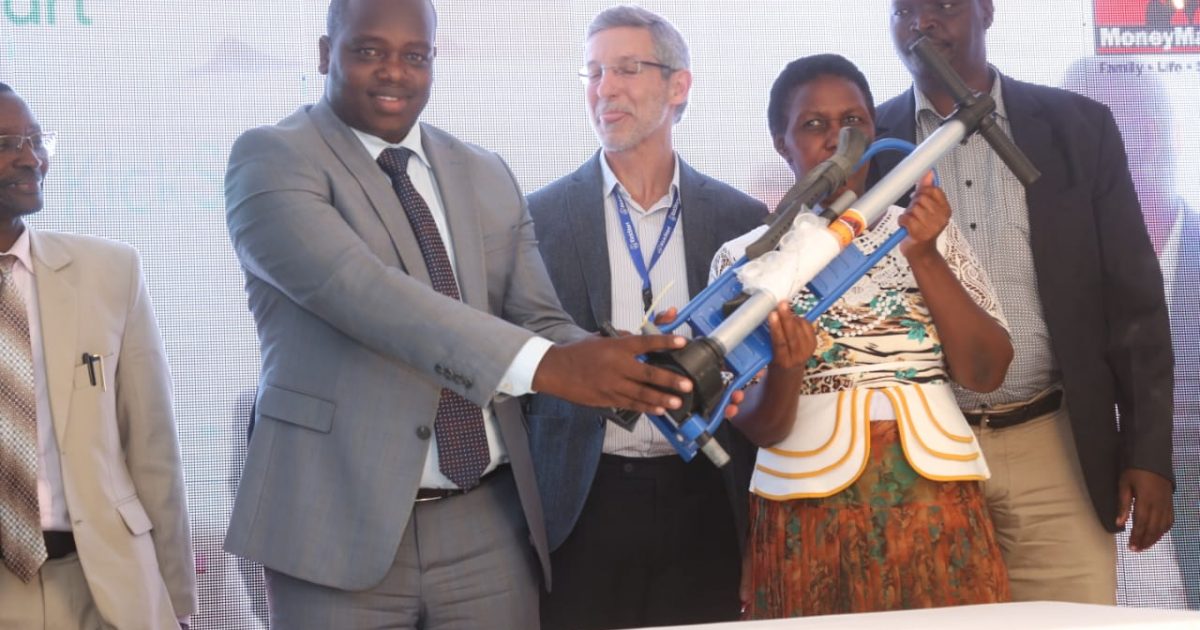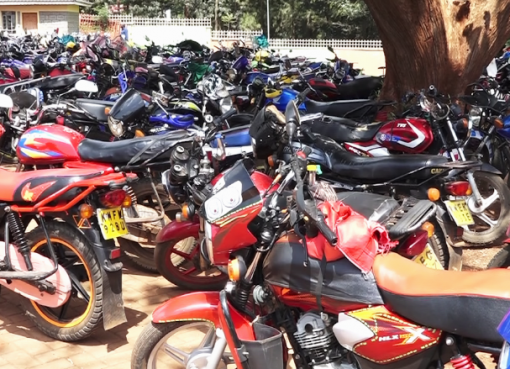For close to six decades, hundreds of farmers in Mauche and Elburgon wards in Nakuru County have been unable to have their grains properly dried and due to the resultant aflatoxin chemical, they usually register losses every season.
Over the period they have also borne the brunt of exploitation by middlemen and brokers who buy their grains at low prices despite the high cost of farm inputs incurred during planting.
Not only have prices been plunging due to high supply, but losses and wastage have arisen due to lack of proper storage facilities.
The farmers are now an elated lot that their tribulations have become a thing of the past after construction of two warehouses was completed under the government-sponsored Kenya Cereal Enhancement Programme Climate-Resilient Agricultural Livelihoods (KCEP-CRAL) programme.
The beneficiaries who are members of Mauka and Mwireri cooperative societies will be delivering their grains there for drying and storage before selling them at the market.
County Executive Committee Member (CECM) in charge of Agriculture Mr Leonard Bor said farmers have incurred heavy losses due to high moisture content of grains and poor storage conditions.
He said the government would oversee management of the warehouse that is expected to offer employment to youth in the county.
The KCEP-CRAL programme is funded by the Swedish development agency SIDA through the Food Agricultural Organization (FAO), the European Union (EU) and the International Fund for Agricultural Development (IFAD).
Mr Bor said the farmers have been sensitized on the importance of the project and received it positively.
The CECM indicated that the programme is part of the national government’s efforts to manage risks in the sector.
“The project has also been helping cushion farmers who are affected by unpredictable rainfall, droughts and crop pests,” he said.
He said Governor Susan Kihika’s administration has intensified its campaigns to enable small holder farmers adopt climate-smart innovations and technologies to help them reduce production costs and boost their incomes.
“The County Government has prioritized sustainable farming practices in its policies and budget to ensure food and nutrition security and build resilience against climate change shocks. Through public-private partnerships we are building capacity of both small and large scale farmers in practicing sustainable agriculture towards improving crop yields, stimulating the economy and helping mitigate climate change,” he pointed out.
Mr Bor indicated that the county government was committed to increasing acreage under irrigation to move the devolved unit away from rain-fed farming.
“Only 17 per cent (0.986 million hectares) of agricultural land in Kenya can be sustained by rain annually. To produce optimally in the other remaining 83 per cent (4.81 million hectares), irrigation must be carried out. In Nakuru our target is to increase the acreage under irrigation from the current 1000 hectares to 2500 hectares across the county,” the CECM explained.
He noted that a lot of productive land in arid and semi-arid areas remained unproductive during the dry season, adding that were the land put under irrigation, food production could increase and food shortage reduced.
The CECM revealed that the County administration was using various forums, including farmers’ field days, to disseminate information to farmers to address climate change challenges.
“Our ultimate goal is to translate the information, knowledge and new technologies into increased incomes for smallholder farmers and alleviate poverty. The investment in irrigation, climate-smart innovations and technologies is designed to promote food security, bring resilience in the economy, create jobs and reduce poverty,” Mr Bor said.
The CECM observed that climate change has different effects on different geographical regions and crop performance, and stated that vulnerable populations are likely to be the most negatively affected.
He added, “The growing urban populations in Africa drive up the demand for food and this could be achieved if smallholder farmers embrace climate-smart agriculture practices which will cushion them against climate change challenges like drought, floods, pests and diseases.”
The CECM indicated that the 2022-2026 Climate Smart Agriculture Multi Stakeholder Platform strategic plan (CSA-MSP) being spearheaded by the national government, aims to equip farmers with adaptation practices on climate action, geared to increase food production hence, reducing the food prices.
He assured residents that the County government will continue collaborating with other public and private sector partners to ensure farmers access crop varieties that are resilient to drought.
“We are committed to work with research institutions, state agencies and private firms to have our farmers rear more heat-tolerant and disease-resistant livestock breeds that are better adapted to the prevailing tough climatic conditions, and which can feed on fodder more efficiently to reduce greenhouse gas emissions per unit of product (such as milk, meat and eggs, among others),” noted the CECM.
Mr Bor noted that agriculture is hugely vulnerable to climate change, particularly in Kenya, where crops rely on regular, sufficient and predictable rainfall.
“Changes in temperature and precipitation patterns have created extreme weather conditions such as flash flooding, drought and locust invasions that have not only slashed crop yields but fueled regional conflicts over diminishing access to essential resources,” said Mr Bor.
He stated that the County government had entered into partnerships geared towards building resilience in smallholder farming and pastoral communities that depend on rain-fed agriculture through scaling up climate-smart agricultural practices, strengthening climate-smart agricultural research and seed systems, and supporting agro-meteorology and advisory services.
“Sustainable agriculture is about increasing farm income, protecting the environment, enhancing quality of life for farming communities and increasing production for human food and fibre needs, he stated.
Mr Bor listed some of the climate smart agriculture practices as development and use of drought and heat tolerant crop varieties, finding use for waste products from crops, training on the costs and benefits of crop insurance, reduction of post-harvest losses through support of agricultural machinery, adoption of biological pesticides for green gram farmers, conservation of agriculture practices such as zero tillage, and mulching, adoption of a warehouse receipting system and making use of waste material for biogas.
“For pastoralists, the practices entail shifts in herd composition from cattle to goats and/or camels, while in dairy farming it involves providing feed supplementation to increase productivity, providing of adequate water, improving collection systems to reduce spoilage and biogas systems to provide household energy and reduce emissions from manure,” he explained.
By Emily Kadzo




